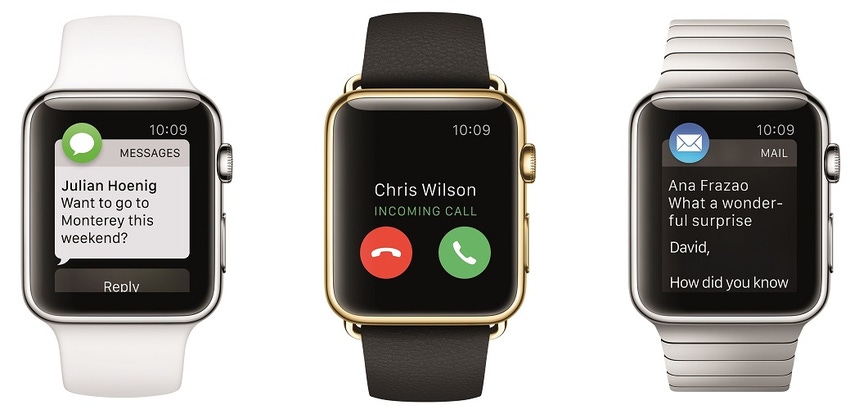New data from analyst firm IDC reveals the wearable device market, which includes fitness bands and smart watches, increased by 200% year-on-year in Q1 2015 to hit 11.4 million units shipped.
June 4, 2015

New data from analyst firm IDC reveals the wearable device market, which includes fitness bands and smart watches, increased by 200% year-on-year in Q1 2015 to hit 11.4 million units shipped.
IDC reckons this is especially noteworthy since it wouldn’t have been surprising to see people delay wearables purchases until they had a better idea of the alternative to be offered by Apple. This could be interpreted at indifference towards the Apple Watch, the preference for cheaper fitness bands, a sign of a healthy overall market or, most likely, a combination of all three.
“Bucking the post-holiday decline normally associated with the first quarter is a strong sign for the wearables market,” said Ramon Llamas of IDC. “It demonstrates growing end-user interest and the vendors’ ability to deliver a diversity of devices and experiences. In addition, demand from emerging markets is on the rise and vendors are eager to meet these new opportunities.
“What remains to be seen is how Apple’s arrival will change the landscape. The Apple Watch will likely become the device that other wearables will be measured against, fairly or not. This will force the competition to up their game in order to stay on the leading edge of the market.”
“As with any young market, price erosion has been quite drastic,” said Jitesh Ubrani of IDC. “We now see over 40% of the devices priced under $100, and that’s one reason why the top 5 vendors have been able to grow their dominance from two thirds of the market in the first quarter of last year to three quarters this quarter. Despite this price erosion, Apple’s entrance with a product priced at the high end of the spectrum will test consumers’ willingness to pay a premium for a brand or product that is the center of attention.”
The top vendor remains fitness band specialist Fitbit, which more than doubled its shipments but still lost overall market share. This was mainly down to the arrival of Xiaomi as a wearables player, which has managed to grab a quarter of the market from a standing start, thanks to its massive Chinese TAM.
Top Five Wearables Vendors, Shipments, Market Share and Year-Over-Year Growth, Q1 2015 Data (Units in Millions)
Vendor | 1Q15 Shipment Volumes | 1Q15 Market Share | 1Q14 Shipment Volumes | 1Q14 Market Share | Year-over-year Change |
1. Fitbit | 3.9 | 34.2% | 1.7 | 44.7% | 129.4% |
2. Xiaomi | 2.8 | 24.6% | 0 | 0.0% | N/A |
3. Garmin | 0.7 | 6.1% | 0.3 | 7.9% | 133.3% |
4. Samsung | 0.6 | 5.3% | 0.3 | 7.9% | 100.0% |
5. Jawbone | 0.5 | 4.4% | 0.2 | 5.3% | 150.0% |
Others | 2.9 | 25.4% | 1.3 | 34.2% | 123.1% |
Total | 11.4 | 100.0% | 3.8 | 100.0% | 200.0% |
Source: IDC Worldwide Quarterly Wearable Tracker, June 2, 2015
IDC is forecasting the wearables third party app market is set to explode from 2,500 apps in 2014 to 349,000 in 2019 a 140x increase. “It has been clear since well before it was launched that the Apple Watch, with the WatchKit SDK, is poised to set a tone for the broader market,” said John Jackson of IDC. “To succeed in what we expect will quickly become a very crowded category, consumer-oriented app developers need to focus on intelligent service delivery and ‘always on you’ experiences that leverage the human factor improvements that smart wearable devices offer.”
In moderately related news IDC is also forecasting the value of the IoT market to almost triple from $656 billion to $1.7 billion by 2020. “While wearable devices are the consumer face of the Internet of Things, and where recognition of IoT appears to begin, the real opportunity remains in the enterprise and public sector markets,” said Vernon Turner of IDC. “The ripple effect of IoT is driving traditional business models from IT-enabled business processes to IT-enabled services and finally to IT-enabled products, which is beginning to disrupt the IT status quo.”
About the Author(s)
You May Also Like








.png?width=300&auto=webp&quality=80&disable=upscale)


_1.jpg?width=300&auto=webp&quality=80&disable=upscale)


.png?width=800&auto=webp&quality=80&disable=upscale)